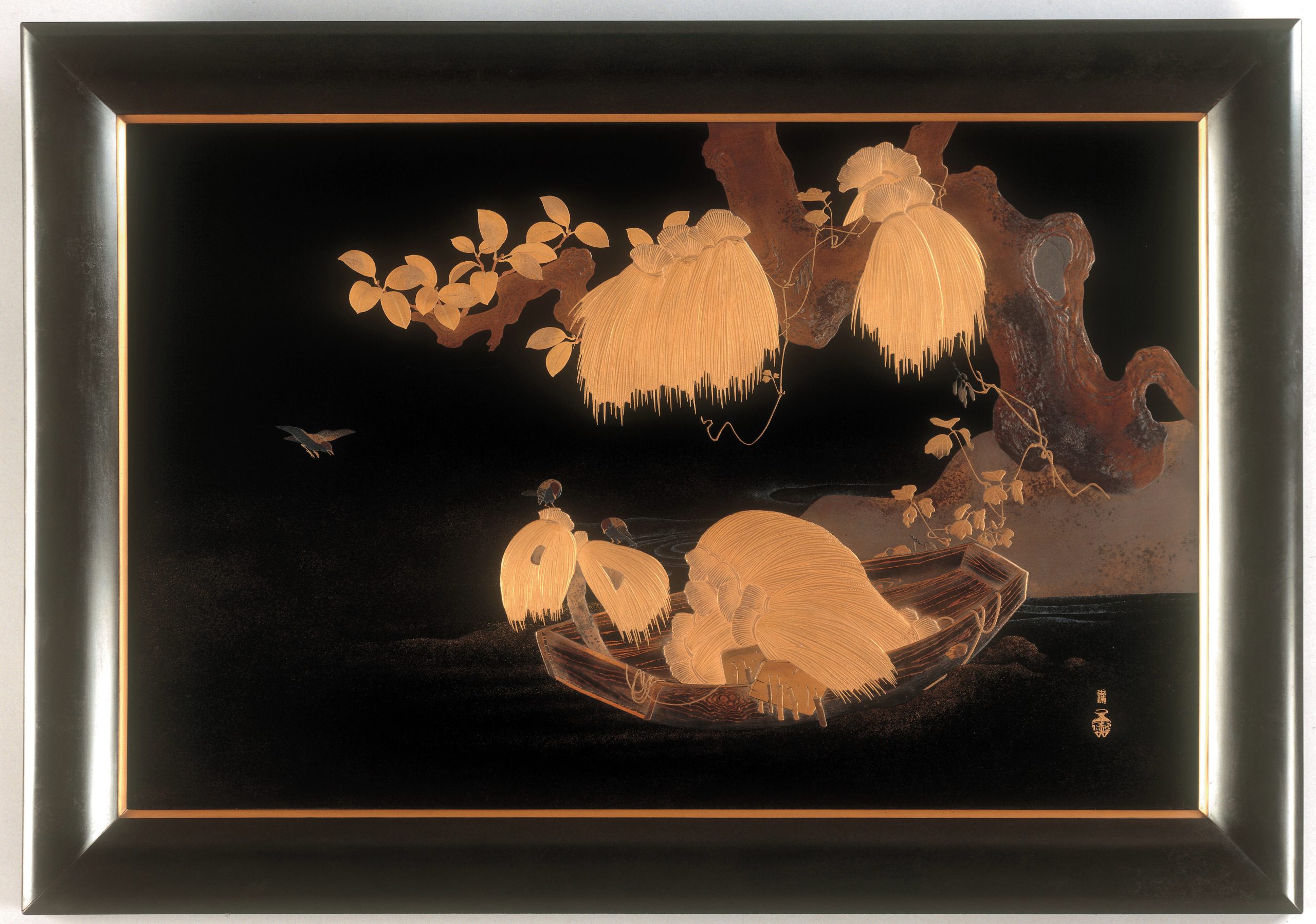 Print Page
Print Page
 Print Page
Print Page
Location: Japan
Materials: wood lacquered in a variety of techniques including hiramaki-e, takamaki-e, togidashi-e, gimpun, kimpun, keuchi, kakiwari, seidonuri.
Dimensions: 49 x 77 cm
Accession Number: GL 4
Other Notes:
A panel depicting a flat-bottomed boat moored under the branches of an old, gnarled tree and stacked with several sheaves of rice; two wood and bamboo naruko [bird-scarers] still attached. Other sheaves have been hung up to dry on a T-shaped stake and in the overhanging tree-branches. Two sparrows peck at the straw in search of grain, while another flies towards the boat. The delicate tendrils of an adzuki vine entwine themselves around the branches of the tree. The decoration carried out on a roiro ground in gold, silver, and different shades of gold hiramakie, takamakie, and togidashie with details in gimpun, kimpun, kakiwari, and keuchi. The frame finished in seidonuri.
Goke, Bakumatsu kaikaki no shikko kaiga, reproduces this panel (No. 117) and suggests that it is the same piece as the ‘black roiro and takamakie panel with rice-boat and sparrows’ which is recorded as having won a bronze medal at the Second National Industrial Exposition in 1881. The exhibition catalogue notes that the joinery work was done by Fukuoka Tetsugoro, the lacquering by Yamamoto Torajiro, and the takamakie by Shibata Junzo (i.e. Zeshin), providing documentary confirmation that the production of these large panels required the collaboration of several craftsmen.
Inscriptions on the storage-box read Shibata Zeshin-o seisaku tabune no zu makie gaku [A makie panel with designs of a flat-bottomed boat made by the venerable Shibata Zeshin] and Ayaoka Yusai sho [Inscribed by Ayaoka Yushin], with a seal Ayaoka shosai no ki [Mark of the Ayaoka library].
Bibliography:
J. Earle (ed.), Meiji No Takara: Treasures Of Imperial Japan: Masterpieces by Shibata Zeshin , London 1996, cat. 30.
J. Earle, Splendors of Imperial Japan: Arts of the Meiji period from the Khalili Collection, London 2002, cat. 33, pp. 75–7.
